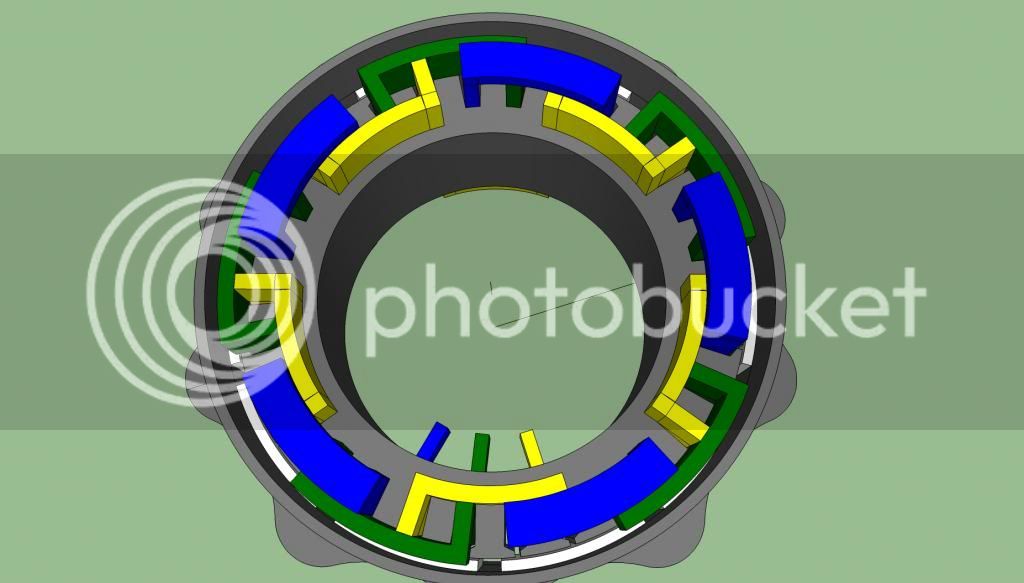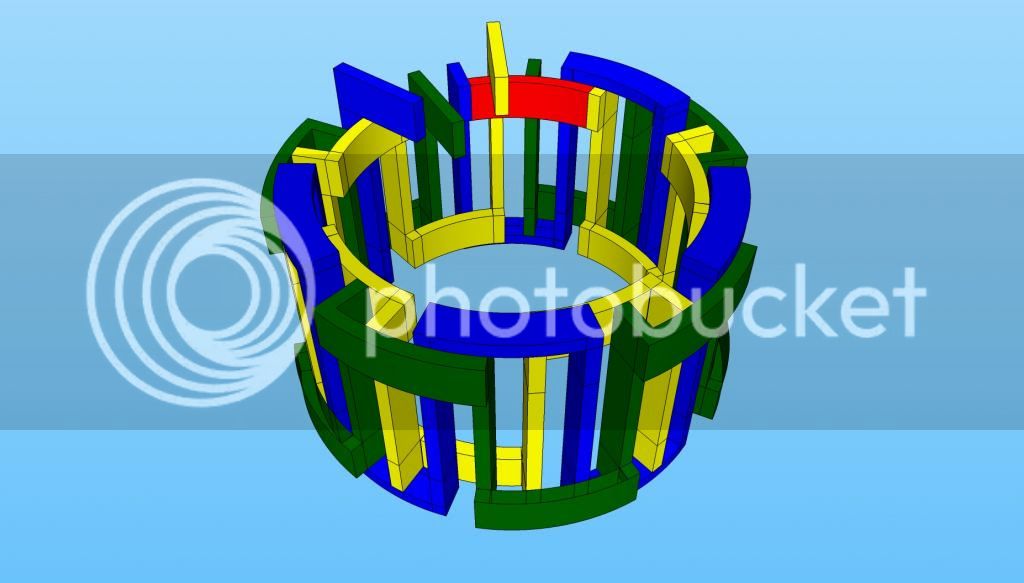Farfle
100 kW
Hello all, I am about ready to start designing a new Outrunner for next years race bike. And would love your input.
My goals:
Less than 300mm outer diameter
Less than 100mm total width
Around 100 horsepower output
Less than 60lb or 27.2 kg
Liquid cooling is ok
Total cost under $3500
Techniques that I want to leverage:
Hairpin TIG welded solid-slot windings for > 90% copper fill, and very high thermal resistance.
An alloy of lamination steel that supports high flux densities. (Hiperco etc...)
Segmented magnets
Laminated back iron.
I have run some Ideas thru both femm and emetor, and have a few different approaches that I would love to run past you guys:
1st approach:
12t 10p single or double layer wind
Pros: familiar, .966 winding factor
Cons: needs substantial back iron, and has a half-ass Sine/trap BEMF.
2nd approach:
30t 10p single layer integer wind
Pros: 1 winding factor, near perfect trapaziodal bemf (controllers are cheap) and easy to wind solid slot.
Cons: lots of yolk iron required, totally unfamiliar territory.
Trying to keep the flux gap speed up while keeping the pole count low, to keep my controller options as open as possible.
Anywho, if anyone has any bright ideas/inputs, I would LOVE to hear them, as this is a shot in the dark for me
My goals:
Less than 300mm outer diameter
Less than 100mm total width
Around 100 horsepower output
Less than 60lb or 27.2 kg
Liquid cooling is ok
Total cost under $3500
Techniques that I want to leverage:
Hairpin TIG welded solid-slot windings for > 90% copper fill, and very high thermal resistance.
An alloy of lamination steel that supports high flux densities. (Hiperco etc...)
Segmented magnets
Laminated back iron.
I have run some Ideas thru both femm and emetor, and have a few different approaches that I would love to run past you guys:
1st approach:
12t 10p single or double layer wind
Pros: familiar, .966 winding factor
Cons: needs substantial back iron, and has a half-ass Sine/trap BEMF.
2nd approach:
30t 10p single layer integer wind
Pros: 1 winding factor, near perfect trapaziodal bemf (controllers are cheap) and easy to wind solid slot.
Cons: lots of yolk iron required, totally unfamiliar territory.
Trying to keep the flux gap speed up while keeping the pole count low, to keep my controller options as open as possible.
Anywho, if anyone has any bright ideas/inputs, I would LOVE to hear them, as this is a shot in the dark for me




